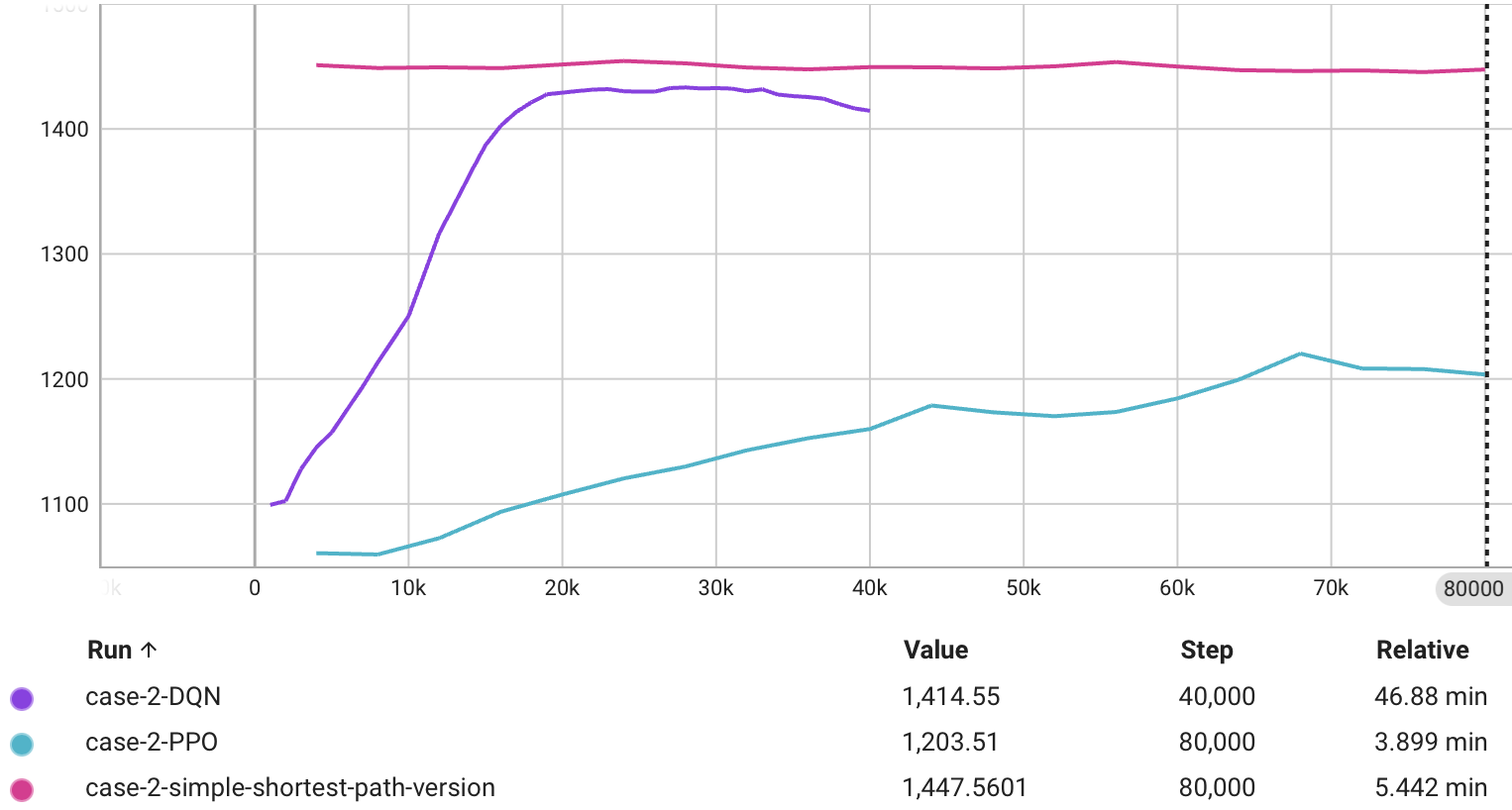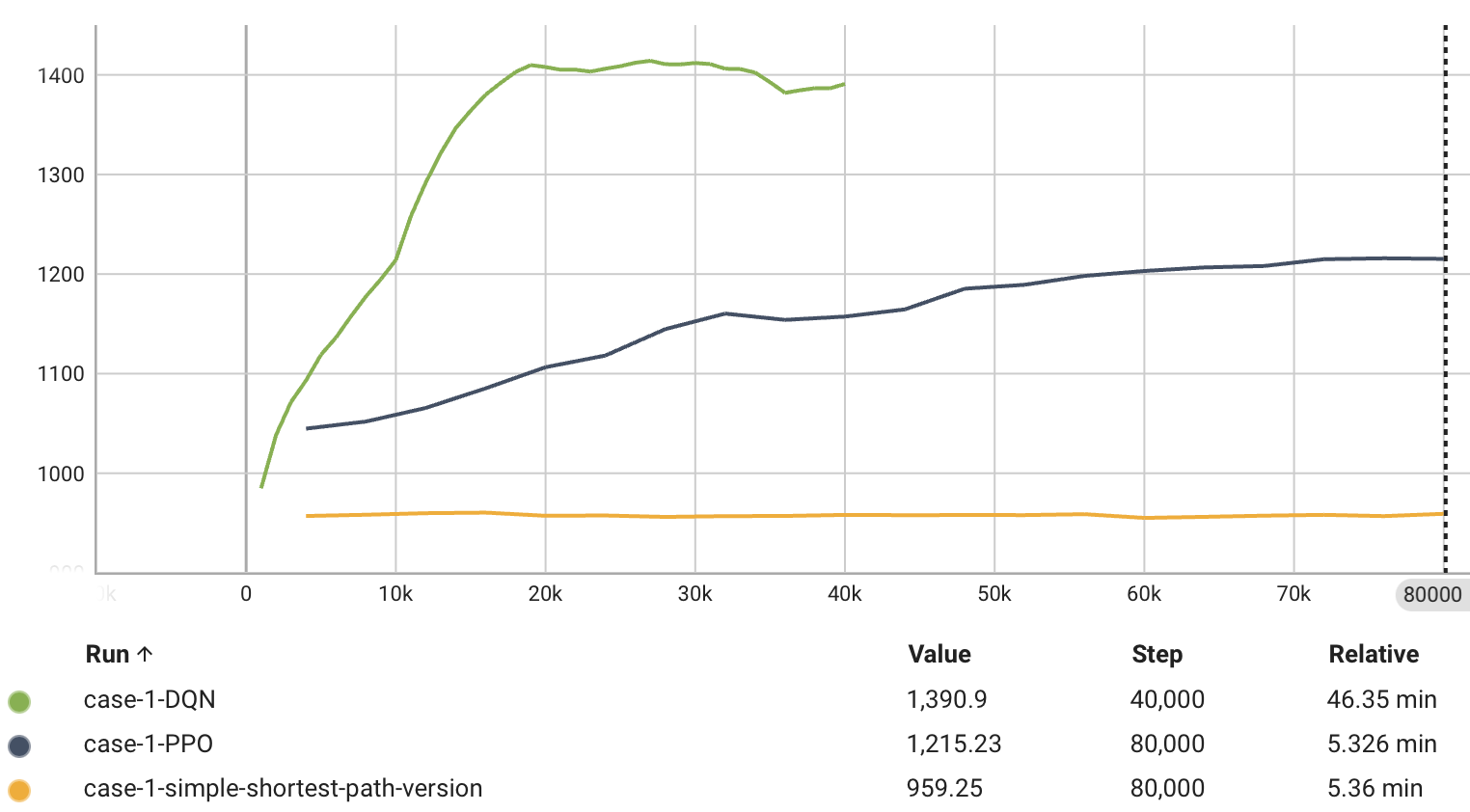Efficiently solving the Routing and Spectrum Allocation (RSA) problem in optical communication networks is crucial for maximizing resource utilization, improving quality of service, and reducing operational costs. By allocating spectrum and routing optimally, these networks can handle increasing traffic demands, support emerging technologies, and ensure reliable and high-speed communication services for users. Effective solutions to the RSA problem enable optical networks to scale efficiently, minimize congestion, and support the continued growth of digital communication infrastructure.
The objective is to maximize the utilization of optical resources across the network. Let
Therefore, the average utilization
- After creating a gymnasium environment, we utilize multiple disjoint paths between arbitrary source and destination nodes
- We use Proximal Policy Optimization (PPO) and Deep Q Network (DQN), a few RL algorithms from the rllib implementation
- We will compare the aforementioned routing technique to the naive approach of only using the shortest path as a way to route a request from the source to the destination node
- We choose the available spectrum with lowest index for every request.
-
nsfnet.gmlis the optical network topology - Link capacity is set to 10 for all edges
- We generate 100 (=num_requests) requests that
- (Case I) All requests have the same source and destination pair (
San Diego Supercomputer CentertoJon Von Neumann Center, Princeton, NJ) - (Case II) The source and destination nodes are selected uniform-randomly among all nodes. (we make sure
$s \neq d$ ) - with a uniformly randomly generated holding time
- We generate a different holding time for each request by
np.random.randint(min_ht, max_ht)- Use
min_ht = 10andmax_ht = 20 - For simplicity, we terminate the simulation after accommodating (or blocking) the last (
$T$ -th) request. No need to wait for all residing requests to leave. We only care about the utilization until the handing of the last request.
- (Case I) All requests have the same source and destination pair (
- The reward at each timestep is
-
-1if the request is blocked - the
htvalue for the request if it is accomodated
-
Given that a holding time for any request can range from 10 to 19 and that there are 100 rounds, the expected return from an episode should be 1,450 if no blocking is experienced. We see in Case II that DQN converges to this value. Our routing algorithm performs similarly to the simple shortest path algorithm because there is not an overload of requests with the same source and destination pair as seen in Case I.
 In Case I, however, our algorithm significantly outperforms the shortest path approach. Obviously, when the number of edges and, subsequently, links are constrained in the network, our algorithm would be a smarter choice to use.
In Case I, however, our algorithm significantly outperforms the shortest path approach. Obviously, when the number of edges and, subsequently, links are constrained in the network, our algorithm would be a smarter choice to use.

- View paper in
papersub-directory